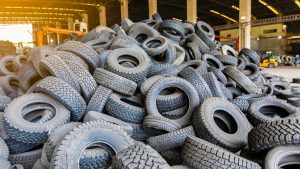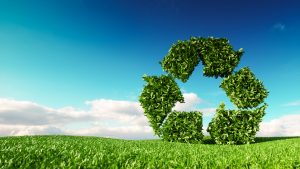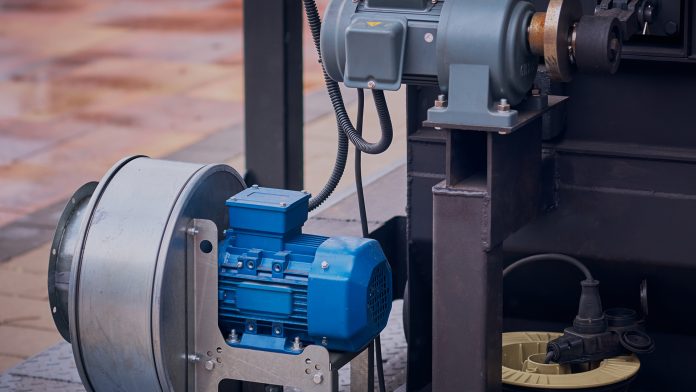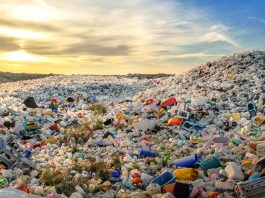Dan Nienhauser, CEO & co-founder of Stellar3, examines pyrolysis systems, their benefits, and why they are emerging as an attractive alternative to incineration for efficient waste management.
Increasing global waste production has prompted the search for efficient, sustainable, and environmentally friendly waste treatment methods.
Incineration, once the dominant waste-to-energy technology, faces competition from advanced techniques such as pyrolysis systems.
What are pyrolysis systems?
At its core, pyrolysis is the thermochemical decomposition of organic material at high temperatures without oxygen. In contrast to incineration, which burns waste directly, pyrolysis systems gently heat waste, producing syngas and char.
Depending on its form, syngas can be substituted for natural gas, and char can be refined into recycled carbon black or activated carbon. In addition, syngas can be condensed and used as a circular oil replacement for other petroleum products and be converted into liquid blend-ready diesel and naphtha. This recycled petroleum can also be refined or used directly in various industrial applications.
As we move towards a future where sustainability isn’t just a buzzword, but a necessity, pyrolysis systems hold great promise.
Collaboration between governmental bodies, businesses, and research institutions is essential. It is possible to transform pyrolysis from an alternative to incineration to a mainstay in waste-to-energy strategies by addressing the existing challenges and promoting the benefits.
Benefits over incineration
Low environmental impact
The first benefit of pyrolysis is its low environmental impact. The release of harmful emissions from incineration, such as dioxins and furans, is one of the significant criticisms of incineration. By contrast, pyrolysis systems feature closed-loop designs that minimise emissions.
System designs with thermal oxidisers and ceramic filters further minimise air-based toxins. Moreover, the gases produced in the pyrolysis process can be cleaned and utilised for energy, making it a cleaner option.
Waste conversion
Additionally, pyrolysis systems can convert waste into valuable products and treat it. For example, pyrolysis of plastics can yield pyrolytic oil, which can be used directly to manufacture new plastics or refined to produce blend-ready diesel or naphtha.
It is possible to generate 55-65% of a new tire by pyrolysing end-of-life tires to create pyrolytic oil and recycled carbon black.

A circular economy, where waste becomes a resource, is at the core of modern sustainable practices. For waste feedstock, incineration has only one option: burning.
Flexibility
Pyrolysis is also a flexible waste management system. It can handle many waste streams, from biomass to mixed plastics to municipal solid waste. Flexible waste management strategies allow for better waste management and varying inputs to be handled without requiring extensive pre-sorting, depending on the circumstance.
The challenges with pyrolysis systems have been mixed plastics containing polyvinyl chloride (PVC) plastics, where chloride gas may cause stainless steel to suffer mainly localised corrosion (pitting). PVC is widely used in medical and industrial fields.
Recent engineering prowess was demonstrated by adopting new system technologies that extract chloride gas from mixed plastics before the plastics enter the pyrolysis retort.
While pyrolysis and incineration both produce energy, pyrolysis does so more efficiently.
Challenges with adopting pyrolysis at a commercial level
Capital costs
Investors may be deterred from investing in pyrolysis facilities because of their high initial investment costs and challenges with previous less efficient system designs.
Despite this, the returns, especially when considering the value of by-products produced, can justify the investment, even without carbon credits or government incentives. Plant costs for high-quality, continuous, and efficient systems have recently decreased, and with increased competition in the pyrolysis space, this trend may continue. Some investment community members have been convinced by recent advancements in pyrolysis systems to make significant investments.
Technological hurdles
Moreover, optimising pyrolysis for various waste streams requires continuous technological refinements. There have been significant advances, but continued research and development are essential. Several new technology developers have significantly improved the pyrolysis efficacy with extensive ‘thermal expertise’ engineering components. Some technology developers are including multilayer Machine Learning capabilities that are expected to enhance output efficiencies.
Market development
Developing markets for pyrolysis products is crucial, particularly pyrolysis oil, carbon black, blend-ready fuels, and char. The economic viability of pyrolysis plants often depends on the ability to sell these byproducts.
Product development
It is also possible to develop circular products from the smaller chemical gas chains created in pyrolysis and new processes to transform carbon char into graphene and other higher-value products.
Scalability
Pyrolysis systems can be scalable, meeting the needs of both small community setups and larger industrial scales. Increasing waste volume and diversifying waste streams can be accommodated by modular designs of pyrolysis units.
As people tend to create waste and use energy where they live, modular designs that are implemented far from refined energy resources additionally save by transforming waste locally into energy-ready products that do not require refining or transportation.
Integrated waste management
Pyrolysis can be incorporated into broader waste management strategies. It is possible to pyrolyse non-recyclable plastics that end up in landfills. When combined with recycling and composting, pyrolysis systems can significantly reduce landfill usage.
Collaborative ventures
As environmental consciousness rises, several industries seek to reduce their carbon footprints. Aviation, for example, has shown interest in alternative fuels, including those derived from pyrolysis systems.
Globally, tire manufacturers are searching for recycled oils and carbon black for new tire production. If waste management and other industries collaborate, pyrolysis plants will be more economically viable.
Regulatory and policy support
Support from policymakers and regulators can significantly impact the growth of pyrolysis. Investments can be encouraged by incentives, grants, or tax breaks.
Moreover, strict environmental regulations around waste disposal can tilt the balance in favour of cleaner alternatives, such as pyrolysis. Government regulations often include pyrolysis under incineration guidelines today. While it is a thermal solution, its purpose is to avoid combustion (and burning).
Successful waste management relies on public participation
While the technical community is excited about pyrolysis, public understanding is still in its infancy. Public support can be gained by engaging communities, dispelling myths, and highlighting the benefits. Overall, public participation is crucial to successful waste management.

Pyrolysis systems have been on a challenging journey from a laboratory concept to a real-world solution. However, their potential benefits regarding environmental protection, resource recovery, and energy generation are clear.
As we strive to build a more sustainable future, technologies like pyrolysis offer innovative solutions to age-old problems. Now it’s up to industry leaders, policymakers, and communities to maximise this technology’s potential. With pyrolysis, we can eliminate waste in a sustainable and cutting-edge way.









